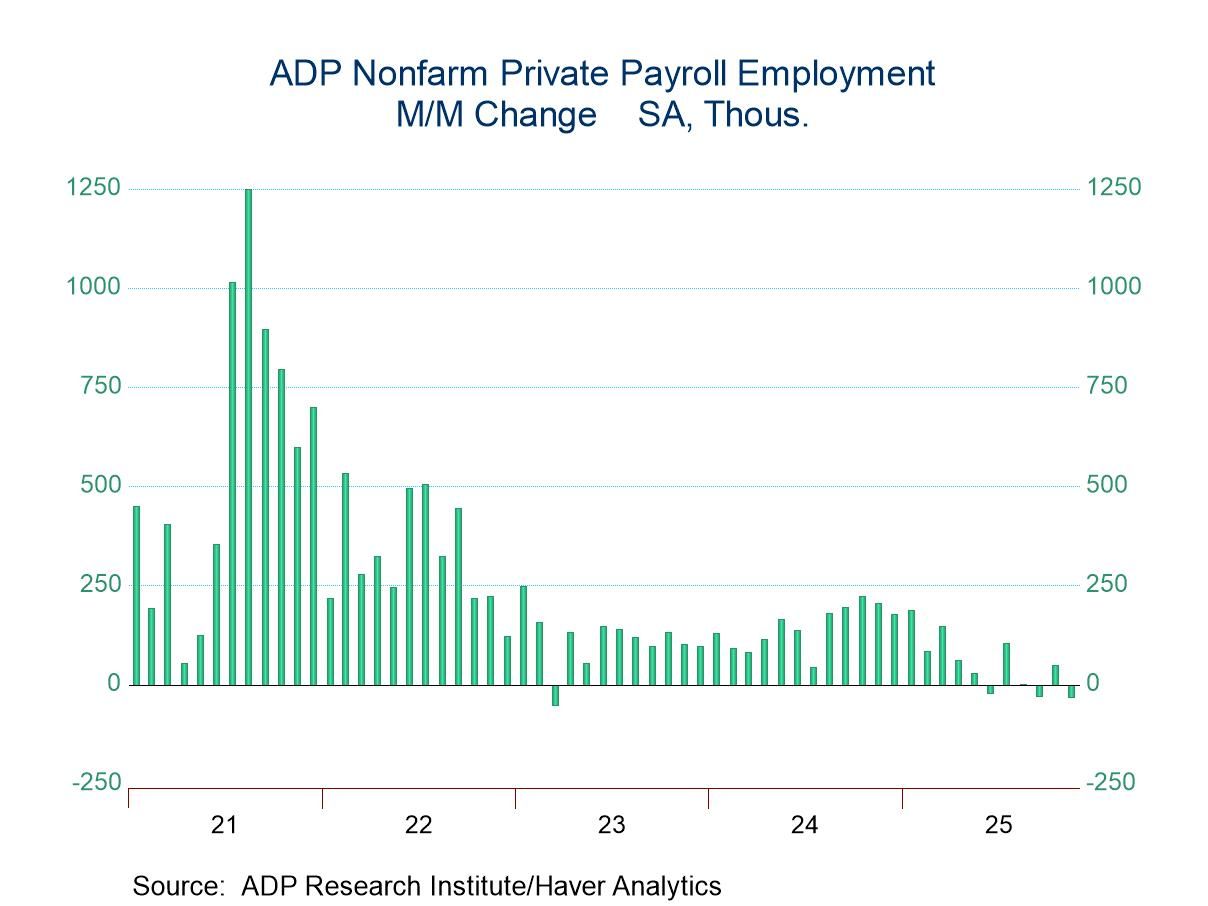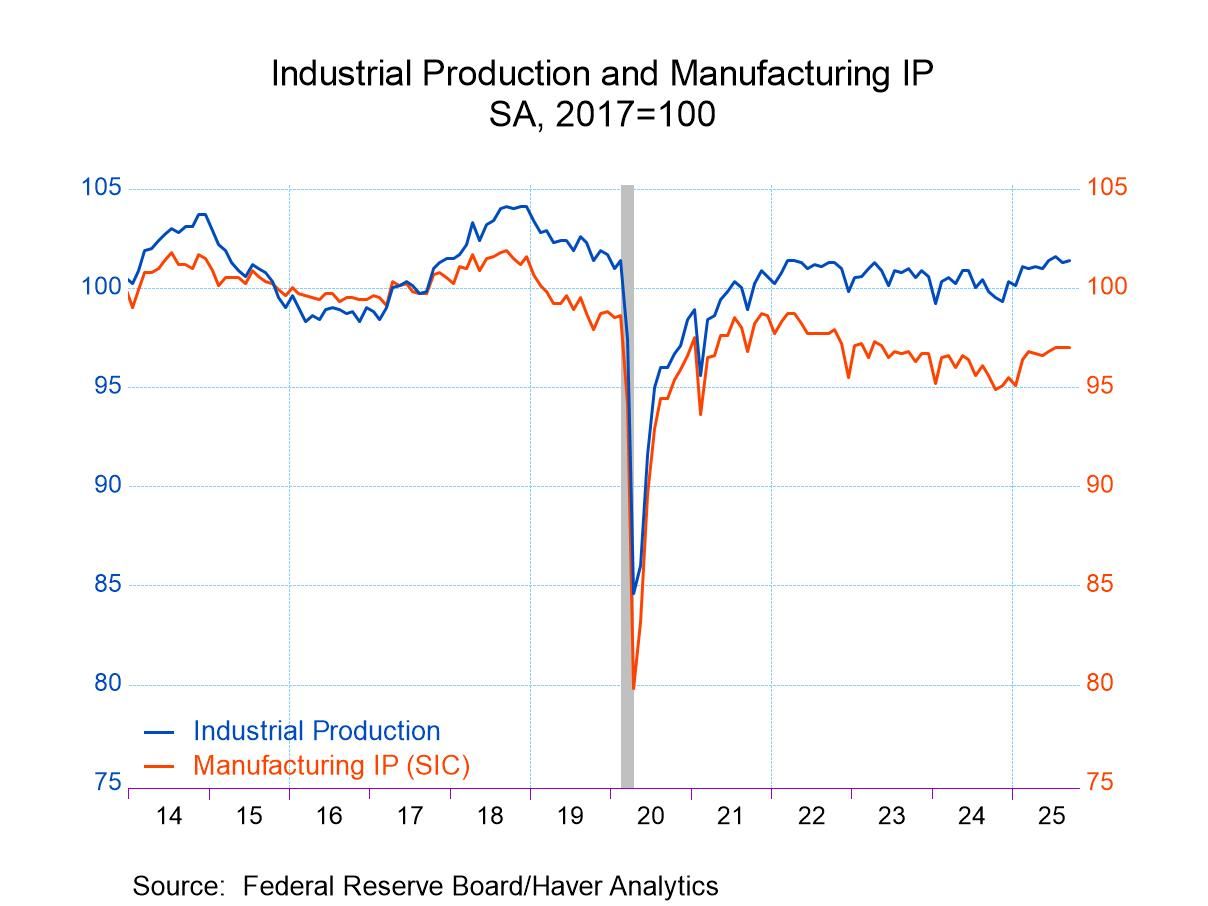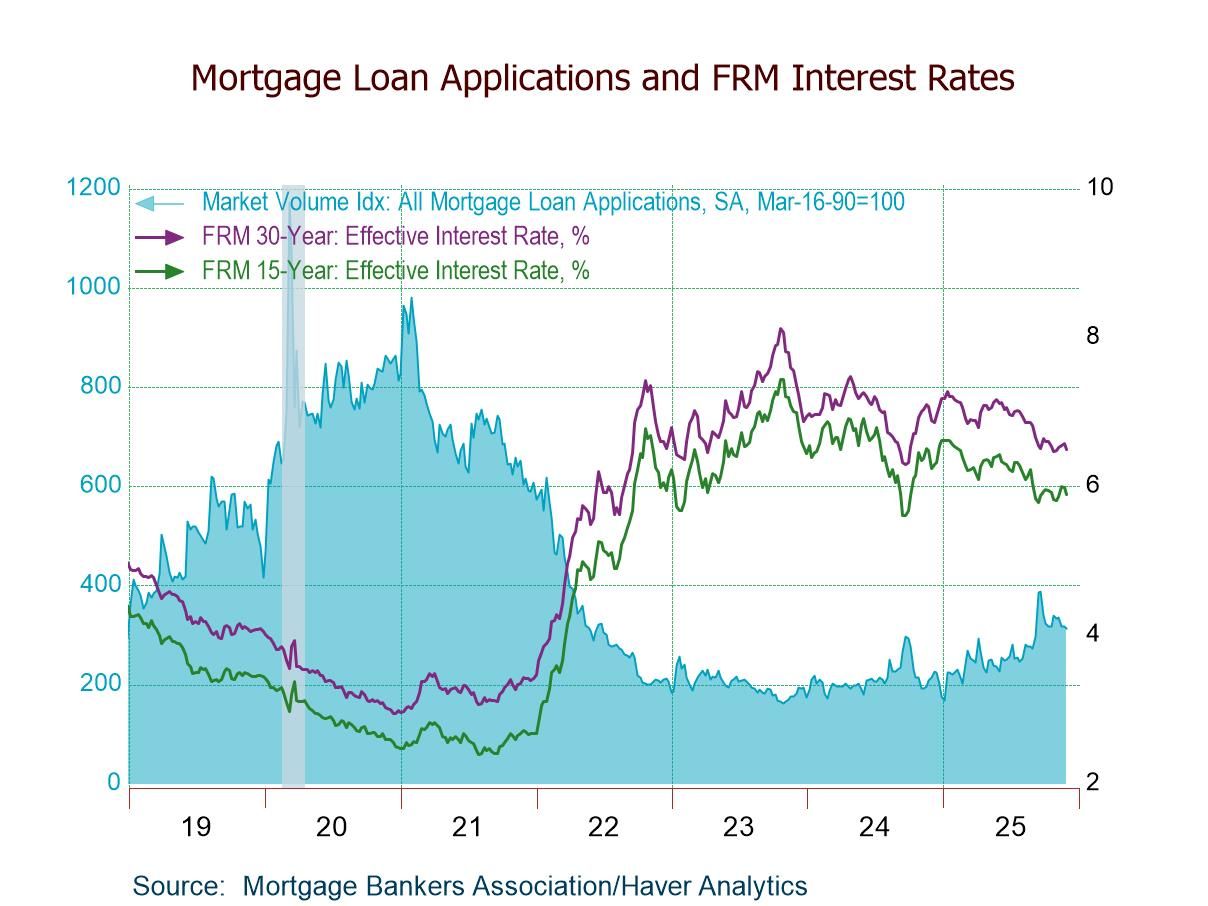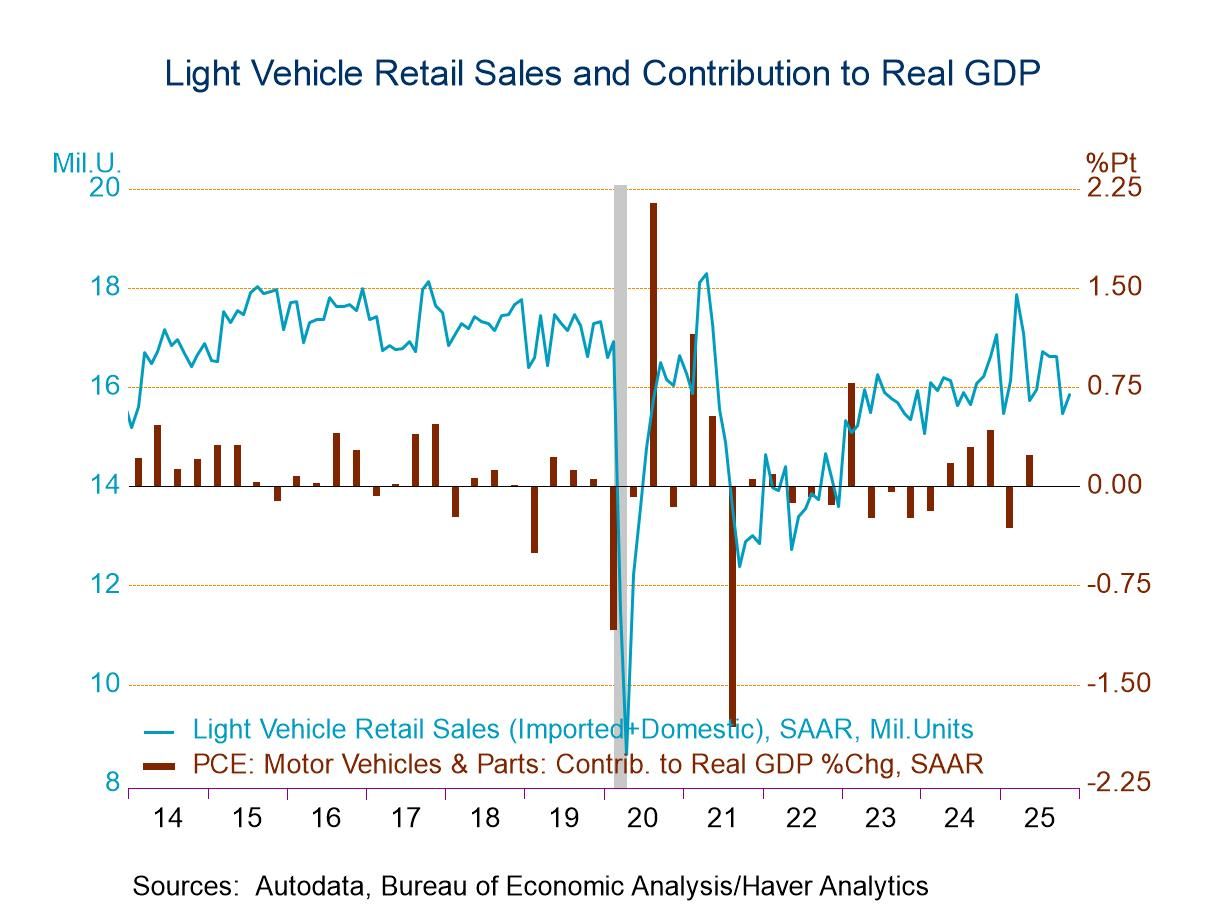U.S. Empire State Index Edges Up in December
by:Sandy Batten
|in:Economy in Brief
Summary
- Activity posted solid growth for second consecutive month.
- Components a little weaker than headline index.
- Still substantial increases in both input and selling prices though pace of increase slowed.
- Expectations slip again but components mostly stronger.


The Empire State Manufacturing Index of General Business Conditions edged higher to 31.9 in December from to 30.9 in November and 19.8 in October. A decline to 25.0 had been expected in the Action Economics Forecast Survey. An increased 45.2% of respondents reported improved business conditions in December, up from 43.0% last month, while 13.2% reported that conditions had worsened, up slightly from 12.1% in November. The latest survey was conducted between December 2 and December 9.
Haver Analytics constructs an ISM-adjusted Empire State diffusion index using methodology similar to the ISM series. The latest reading fell to 60.8 in December from 62.5 in November, indicating that activity remained robust in December though the pace slowed slightly. A reading above 50 signifies growth. Moreover, in contrast to the ISM index, the headline Empire Index reflects the answer to a single question and is not calculated from its components. The slight decline in the ISM-adjusted Empire Index indicates that readings on the components were not quite as strong as the headline index indicated.
The index's component series mostly declined slightly in December. The new orders measure slipped to 27.1 from 28.8. Shipments fell to 27.1 from 28.2. Inventories edged down to 9.1 from 9.3. The delivery time index declined for the second consecutive month—to 23.1 from 32.2. So, while delivery times remained historically quite long, they lengthened less in December. A lessened 34.7% of respondents reported increased delivery times versus 38.1% in November, while 11.6% reported shorter deliver times, up sharply from 5.9% in November. However, the unfilled orders series rose to 19.0 in December from 12.7 in November.
Employment indicators in the survey weakened in December. The number of employees index fell to 21.4 from 26.0 in November. However, the November reading was a record high for the series dating back to July 2001. The percentage of respondents reporting increases in employment fell to 26.7% in December from 29.2% in November while 5.3% reported a decline in employment, up from 3.2% in November. The average workweek series fell sharply to 12.1, its lowest reading in four months, from 23.1 in November.
Inflation pressures remain intense though the pace of price increases slowed. The prices paid index dipped to 80.2 in December from 83.0 in November. The record high was 83.5 in May. A lower 81.8% of respondents paid higher prices for inputs in December, down from 83.1% in November while only 1.7% paid less (though this was up from zero in November). The prices received measure fell to 44.6 from a record 50.8 in November.
The index of business conditions in six months slipped to 36.4 in December from 36.9 in November and 52.0 in October. It was the lowest reading in seven months. Expectations for new orders, shipments, prices paid and delivery times fell while expectations for unfilled orders, inventories, prices received, employment and the average workweek rose. Expectations for both capital spending and technology spending also rose slightly.
The Empire State data, reported by the Federal Reserve Bank of New York, reflect business conditions in the manufacturing sector in New York, northern New Jersey and southern Connecticut. The headline measure is constructed from the answer to a single question on business conditions. The Empire State figures are diffusion indexes, which are calculated by subtracting the percent of respondents reporting declines from the percent reporting gains. The data are available in Haver's SURVEYS database. The ISM-adjusted headline index dates back to 2001. The Action Economics Forecasts can be found in Haver's AS1REPNA database.



Sandy Batten
AuthorMore in Author Profile »Sandy Batten has more than 30 years of experience analyzing industrial economies and financial markets and a wide range of experience across the financial services sector, government, and academia. Before joining Haver Analytics, Sandy was a Vice President and Senior Economist at Citibank; Senior Credit Market Analyst at CDC Investment Management, Managing Director at Bear Stearns, and Executive Director at JPMorgan. In 2008, Sandy was named the most accurate US forecaster by the National Association for Business Economics. He is a member of the New York Forecasters Club, NABE, and the American Economic Association. Prior to his time in the financial services sector, Sandy was a Research Officer at the Federal Reserve Bank of St. Louis, Senior Staff Economist on the President’s Council of Economic Advisors, Deputy Assistant Secretary for Economic Policy at the US Treasury, and Economist at the International Monetary Fund. Sandy has taught economics at St. Louis University, Denison University, and Muskingun College. He has published numerous peer-reviewed articles in a wide range of academic publications. He has a B.A. in economics from the University of Richmond and a M.A. and Ph.D. in economics from The Ohio State University.






